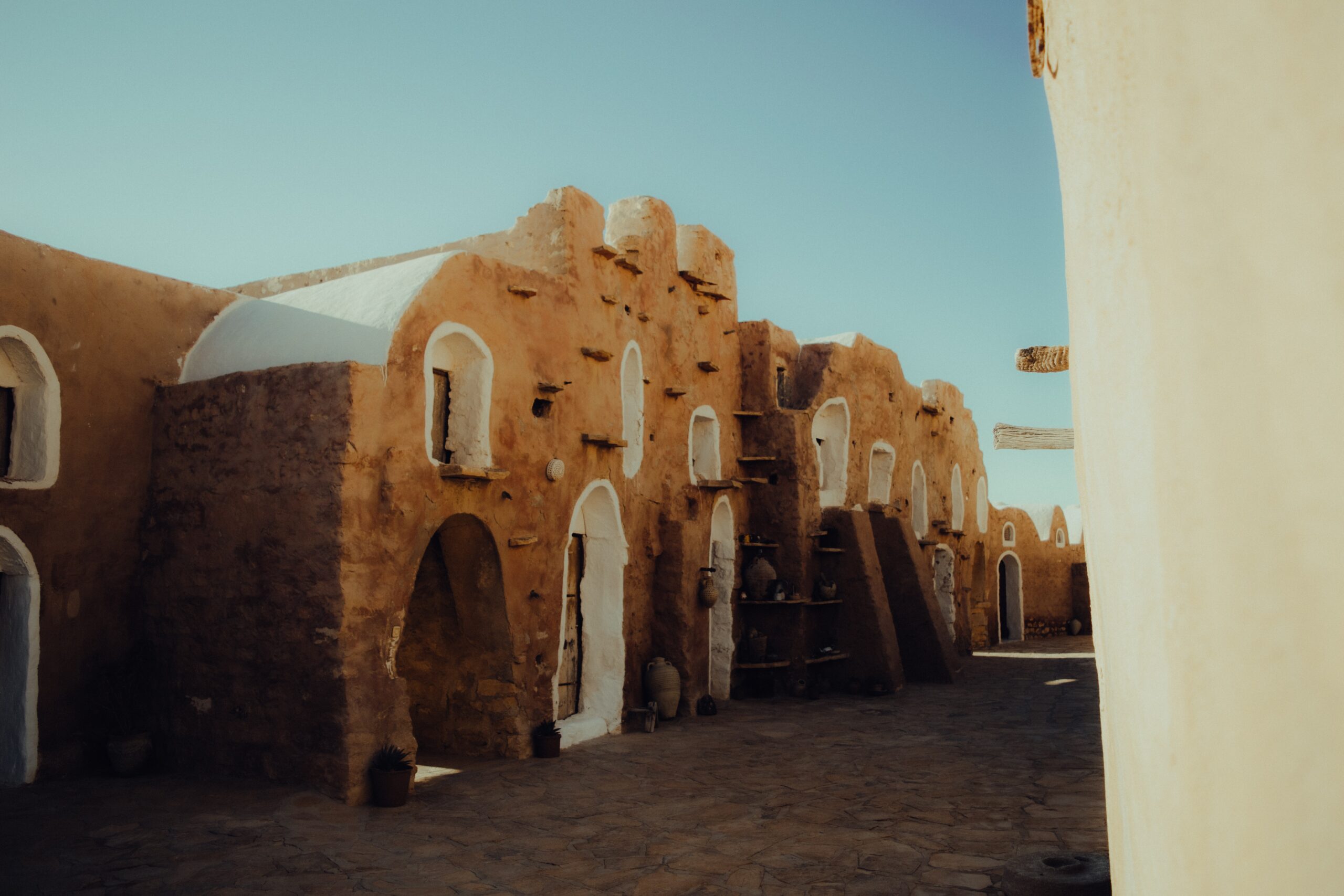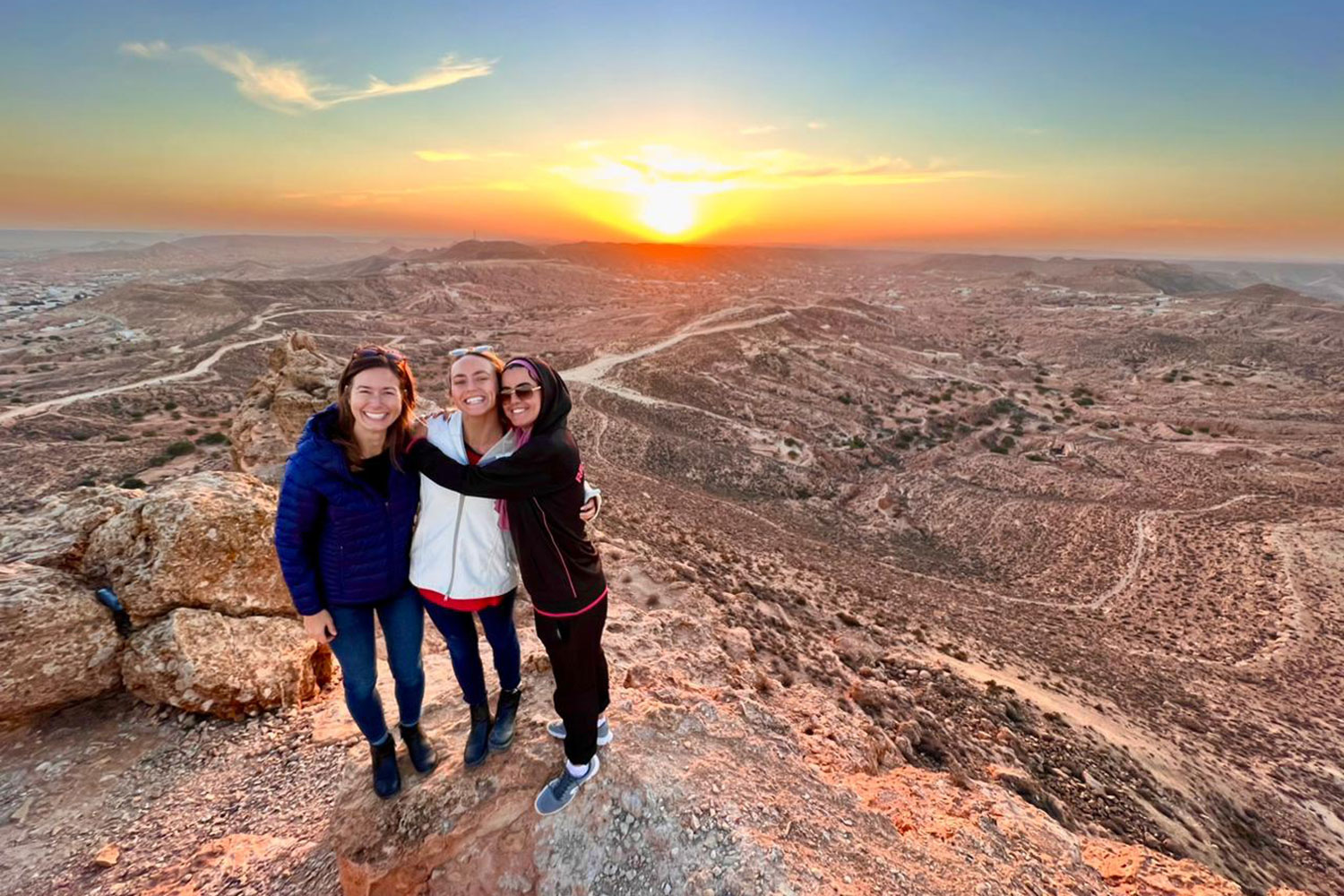How is Tourism Connected to Mass Emigration? Insight into the Opinions of the People still living in the South of Tunisia
Migration is one of today’s most pressing issues, especially as more and more conflicts arise and the climate crisis worsens. Such events often lead to mass emigration: the process of considerable parts of a population leaving their homelands in search of a better life.
The effects of large-scale immigration into countries are no stranger to media coverage and political discussions. But what people often forget is how such large population movements affect the sending countries and those left behind.
This blog will cover the impacts on one of the origin countries — Tunisia. In addition, the blog will answer the questions of how tourism can help and, more importantly, how the people still living in the southern, mostly abandoned villages, feel about it.

Why do people emigrate?
Migration is a significant part of our history: humans have been on the move since their existence. Back then, migration was a means to take advantage of new and rivalless lands offering basic human needs. The more time progressed, war and colonialism became more central drivers of migration. Ancient expansions like the ones of the Greek Dynasty, the Roman Empire, Imperial China, or, more recently, the Europeans leaving for the “New World“ led many people to leave their region of birth. Other conflicts like the Jewish Diaspora, the partition of India, the Transatlantic Slave Trade, and the Second World War events are just the tip of the iceberg. The past has even seen climate-related migration – Roman settlements in Egypt had to flee due to the absence of monsoon rains.
The latest IOM Report estimates there were around 281 million international migrants in 2020. While that number also includes migration out of necessity – forcibly displaced people – the significantly larger part leave voluntarily. So why exactly do so many people feel the need to take on such journeys out of choice?
The IOM has defined six factors that drive people to migrate.
-
Labour
-
Family
-
Inequality and uneven development
-
Education
-
Armed conflicts, violence, and human rights
-
Environment and climate change
What are the economic Effects of Mass Emigration on the Sending Country?
The effects of mass emigration on the sending countries can be boiled down to three main exchange factors. These can have both negative and positive economic impacts on the country of origin.
1. Workforce Flow
The migration of workers in search of employment results in a decrease in the labor pool in the origin country. This can relieve unemployment, lower job competition, and raise salaries for remaining workers. However, when such migrations surpass the necessary amount, it can result in workforce shortages with detrimental effects on the economy.
2. Brain circulation
Brain circulation is the movement of skilled laborers, for instance, doctors. In developing countries like Haiti, the out-migration of skilled labor (brain drain) can be a huge loss, especially concerning the health and education sector.
3. Remittances
Emigrated workers often send home money to their families, giving them vital support and contributing to the home country’s economy. Remittances can add up to a significant amount and reduce poverty, encourage consumption and increase a household’s investment in education.
All of this doesn’t sound too bad. However, reducing the workforce, especially skilled laborers, will slow a country’s productivity in the long term, resulting in a further downward spiral of its economy and the living standard of those remaining. An article published by the OECD stated that “In the long term, emigration can even turn into a poverty trap: because emigration helps relieve the pressure on the labor market and remittances constitute a social safety net, governments may not see the need to reform labor markets and social welfare systems.”
So, the advantages can, in the long run, outweigh the initial gains and hinder the country from developing policies and containing the human capital needed to sustain itself.
What Effect does Emigration have on those left behind?
Imagine nearly every person you know wishes to move away. Imagine some of your friends or family died while chasing hope. Unfortunately, that is the reality for many people in developing countries around the world.
Most of the time, migrants are sole voyagers, leaving behind families, friends, wives, and children. It is often too expensive and nearly impossible, due to immigration restrictions, to bring entire families overseas. So many of them resort to separation from their loved ones to send home remittances.
The stress of not knowing whether they will survive such journeys, as migrants often take on illegal and dangerous ways to reach their destination, makes the situation even more dire. Tunisia’s closest foreign landmass is Italy. The Central Mediterranean Migration Route connects the two countries. According to the IOM, it is the world’s deadliest migratory route. Since 2014, the route supposedly took the lives of 25,331 migrants.

Mass-Emigration in Tunisia
Tunisia is a migration hub: Tunisians account for the high number of departures, and the country is a highly used transit state for Sub-Saharan Africans.
How has history shaped Tunisia’s Emigration?
Since Tunisia gained independence, Tunisians have been emigrating to European countries. In the 60s and the 70s, Tunisians left their homelands for a better life on the other side of the Mediterranean. Mostly they settled in France, their former colonial power. The 80s and especially the 90s saw the first big surge in departures. However, in the aftermath of the 2011 revolution, numbers peaked at a never before seen high.
The Global Initiatives Research Report, Losing Hope, states that irregular migrant departures are at the highest point since the peak in 2011. According to the Migration Data Portal, as of 2020, Tunisia had a total of 902,000 emigrants. And Diaspora for Development states that 6.9% of Tunisians live abroad.
Who are the Tunisians that emigrate, and why?
So, why do so many Tunisians feel the need to take on these harrowing journeys? To answer that question, we need to know who the emigrants are and what problems they face.
In the Global Initiative’s Report, they found that the migrant profile has changed in the recent past. It used to be overwhelmingly males aged 18 to 35 with minimal education and mainly from the lower class. Now you see more and more women and children joining, sometimes even whole families. Even the economic state of migration has changed. For some, high education and employment are no longer reasons to stay.
Since the 2011 Arab Spring, Tunisia has experienced social and economic difficulties driving people to leave. The financial situation has drastically declined since 2017. Meanwhile, Inflation is affecting the poorest, and the quality of life has significantly deteriorated for the middle class. In addition to losing their buying power, Tunisians have to deal with high unemployment rates, especially with the youth and individuals with advanced education. Furthermore, a significant part of the population lost faith in the government to stabilize the issues at hand.
The Covid-19 Pandemic has only fueled the fire. A great part of the Tunisian economy comprises the tourism sector. Moreover, like many countries, Tunisia had to endure the troubles of global health restrictions leading to further unemployment and hopelessness.
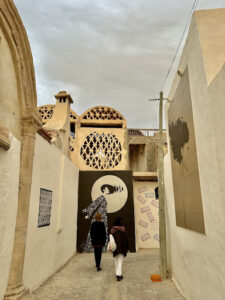
What is the Situation like in the South of Tunisia?
Not only is Tunisia experiencing emigration out of the country but in Tunisia’s southern areas, particularly Dahar, the villages have suffered great losses from rural depopulation. The region in the Djebel Dahar mountain range was a refuge for the ancient Amazigh tribes, sheltering from the Arab Invasion. There they were able to live their unique way of life — mastering the art of living in these harsh but beautiful lands. The traditions they developed live on to this day thanks to strong individual efforts to preserve these ancient ways.
However, in the age of Bourguiba, there was a drive for modernization and Arabization. Starting in the 60s, the majority of the Amazigh mountain people had to relocate to the “new” villages, leaving many of the historic mountain towns to crumble away.
Today the region is not only suffering from unemployment but is simultaneously experiencing a devastating drought, driving even higher numbers of people to leave. As a result, only a handful of authentic Amazighian old towns are left, where families are fighting to live their old way of life. Amongst them are Chenini, Toujane, and Matmata.
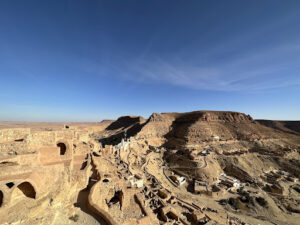
How can tourism help?
Tourism is one of the world’s biggest industries: it contributes a tenth to the global GDP and creates 1 in 10 jobs worldwide. So harnessing this immense power and using it for the good should be an overall goal. According to the UNWTO, tourism is a recognized pillar of most Sustainable Development Goals.
The UNWTO believes that “tourism can be harnessed as a significant force for the alleviation of poverty, as well as for environmental protection, giving economic value to cultural heritage, creating employment and generating foreign exchange earnings.”
According to the IOM, most migration moves from underdeveloped and developing countries to larger economies. Desperation drives people to escape poverty, dire employment perspectives, and political and social instability. The UNWTO claims that three-quarters of people in extreme poverty live in rural areas and that tourism has the advantage of reaching locations far from economic centers. Thus, tourism is one of the few industries that can provide profit for people struggling directly in the places they live, supporting the local communities.
So authorizing organizations like Solimar International, who are dedicated to a sustainable approach to tourism, namely sustainable tourism for development, can directly work towards eliminating these emigration drivers.
Three reasons tourism can foster development and reduce out-migration
1. Create new job opportunities
Tourism not only requires the direct employment of workforces in the hospitality sector but also allows locals to either indirectly or directly sell their goods and produce to tourists.
2. Foster development
Especially in rural, underdeveloped, and disadvantaged areas, the introduction of tourism depends on developing basic infrastructure. Such investment will simultaneously benefit the local communities. (roads, water supply, electricity, network connectivity, and so on).
3. Provide a chance for further education and development of skills
An increase in tourist activity can encourage individual education and incentivize state-financed training.
Tourism can directly counteract at least three major migration drivers: Labour, inequality and uneven development, and education. Furthermore, several other benefits from tourism can positively affect the local communities.
- A healthy exchange of culture can lead to increased awareness, the adoption of new knowledge like languages, and even the empowerment of neglected groups.
- It can lead to crucial individual acknowledgments of the community’s assets. By noticing the incoming interests, it may lead to locals appreciating their own wealth and culture.
- It can promote inclusiveness, further gender equality, and empower youth and women. According to the UNWTO, in Africa, women make up 69% of the tourism labor force.
South Tunisia’s Relation to Tourism
Tunisia is well-known for its tourism, a popular Mediterranean destination for many Europeans. However, Tunisia’s tourism mainly concentrates on the coastlines, and tourists rarely venture land inwards.
In the Regional Development Planning of the Southern Region in the Republic of Tunisia Project, the report states that Tunisia’s tourism development must consider how to minimize “regional disparities between coastal and inland areas. Moreover, now, tourism shall consider how to involve local communities. In this context, the GoT (Government of Tunisia) is trying to exploit the new tourism products, especially ecotourism supported by international donors.”
Tourism won’t help fix Dahar’s drought or create job opportunities for everyone in need of them. However, it can create perspectives for specific individuals and their families. Even more so, small communities, like the ones in Dahar, are often very tight-knit and share profits.
The Perspective of Dahar’s Residents
It is critical to listen to what the local people think about this important and extremely sensitive issue. Following are some interviews with local Amazighian people living in the South of Tunisia, specifically the Dahar region. Some of them work in the tourism sector, whereas some do not. They voiced their opinions on the issues they face, their attitude toward tourism, and their aspirations.
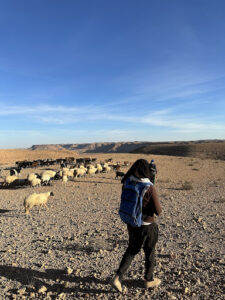
Wael: Wael is a young man living in the town of Zmerten in the Governorate of Gabés. He works in the town’s café, which rarely sees tourists.
“Firstly, each region has its own customs and traditions. Here, in Zumraten, 76% of the inhabitants are now displaced. Most of them are young people. The elderly do not want tourism. I understand that this offends their customs and traditions. On the contrary, young people are very open to all cultures and want a good education and a better standard of education and living. But every youth is ruled by an elder, his father or mother… I am conscious that harmony, tourism, and cultural exchange are very important, but despair has settled. In all their thoughts, young men want to get married, do business, and do commerce, but our geographical location has become the biggest obstacle for us because we have no workplace, and even agriculture has become seasonal. And after many years, you are threatened with displacement because work has become non-existent.”
Amal: Amal is a 27-year-old woman, born in the small town of Oued El Khil, Tataouine. She studied in Sfax for a few years but returned to her hometown for an internship with the newly emerged Destination Management Organization, FTADD. Since then, Amal has dedicated as much time as possible to the region’s future by using tourism as a tool for development. She is a hard-working and emancipated woman but feels a deep connection to her ancestral traditions and the Amazighian way of life, which she is dearly trying to protect.
“Well, we have several issues, but mainly employment and the expensive prices in Tunisia are the main issues. Education is another problem because those who have left mainly have a high education level. This country didn’t give them enough opportunities, so they left. Everyone is affected, Tunisia is losing thousands of young people, and the economy is suffering.”
“I can’t tell the exact number of how many have left, but you can see it in our villages. Most of our villages are abandoned due to emigration. This year we had thousands of young people leave the South, precisely Tataouine, to European countries like Italy and France. Many of these thousands sank in the sea, which is heartbreaking.“
“It is not a very good feeling. I don’t want to judge those who left, because losing hope can let people do more. But I always had this thought that you are a stranger unless you are home. Big cities may give more opportunities, but nothing feels like home.“
“I think tourism can really help, and we already have enough examples in Dahar about how tourism helped change people’s lives. It is more than creating job opportunities; it makes them believe in what they have — seeing it as something that can attract people.”
“And as well, we noticed a difference in the female situation. We are having more female entrepreneurs, which is amazing in a domain dominated by men.”
“Tunisia has a lot to offer; hopefully people will see Tunisia as more than an all-inclusive package. I want people to visit Dahar and share their opinions about it. We are an emerging destination and are trying to succeed to highlight our unique heritage. Hopefully, more people will come to see my people, our heritage, stories, and history. We have a lot to offer.”
Aloui: Aloui is 22 and lives in the old village of Chenini, Tataouine. He was born there and has lived there his entire life. Now he works in the town’s only café and tries to earn additional money by giving tourists a tour of the town and explaining its history and how it lives on today.
“I don’t know many people; I don’t have many friends, I am good. There are those who left and haven’t returned, and there are those who left and returned to Chenini. Yes, life is hard here. It isn’t a walk in the park; there is no work, so people leave the country.”
“Here in Tunisia, there is no good education. The biggest problem in Chenini is the lack of tourism. All the inhabitants of Chenini love tourism. Tourism is a pleasure and a comfort. I prefer to stay here, as long as tourism comes to us, to Chenini.”
Although tourism won‘t fix all of Tunisia‘s problems and provide perspectives for the entire population, it can relieve communities and some individuals. So when choosing your next destination, you can always think about more than just your own benefit — and while enjoying your holiday, even help the local communities.
